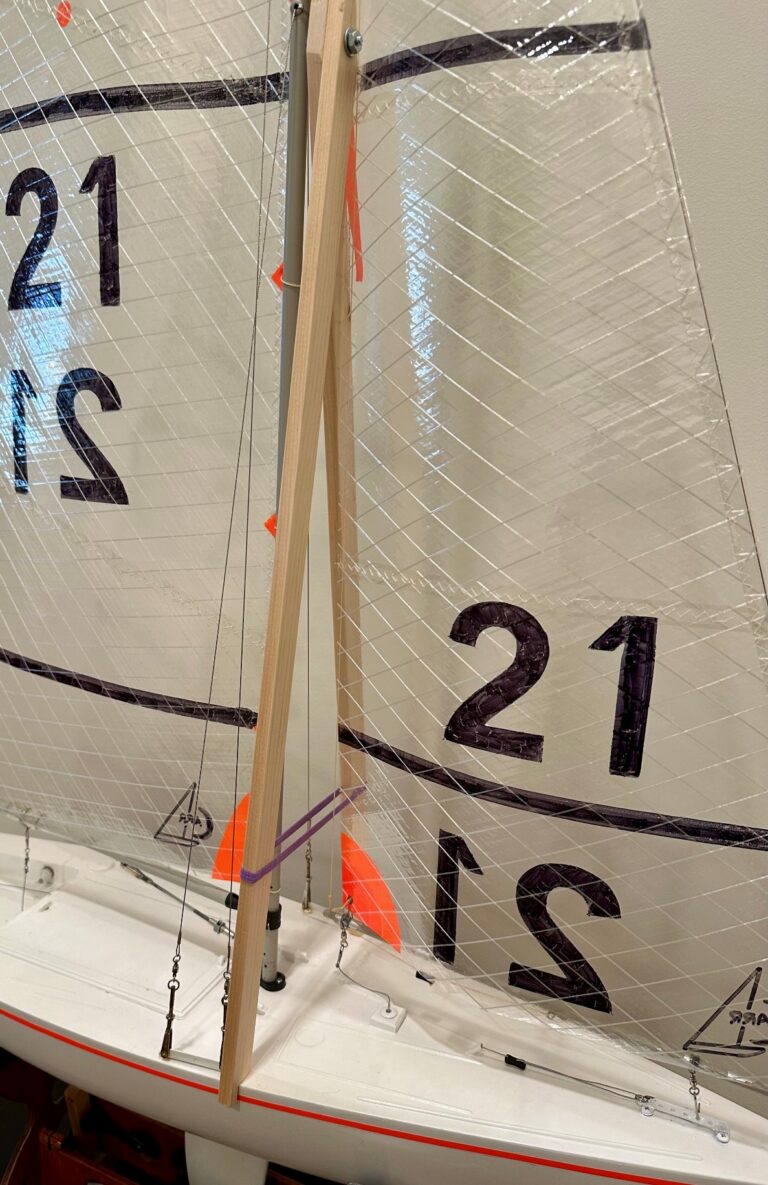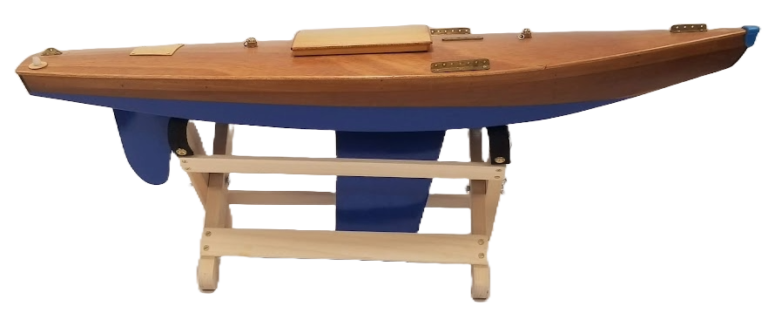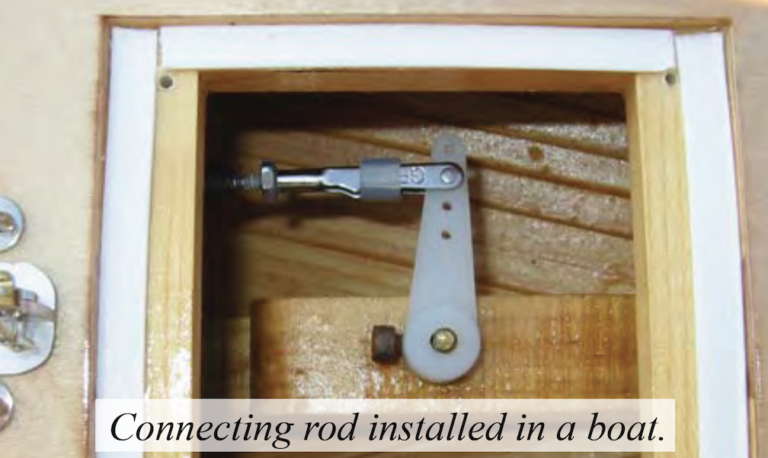Article and images by John Stoudt.
The last thing to do before you put your boat in the water for the “on the water tuning” is what I call bench tuning your boat. This is done after you have set up the rig and verified that it is true side to side and that the mast is plumb fore and aft.

Place your boat on its side on the edge of a workbench or table with the rig installed (see Illustration 1). Make sure that there is an overhang that allows the booms to move up and down without hitting the edge of the bench. At this point you will tie off the sheets coming out of the boat and those attached to the booms.
Follow these steps:
- Turn on the boat and the radio.
- Place the sail control in the closehauled position, left-hand transmitter stick (throttle) toward you. If it does not point toward you, reverse it now.
- Set the sheet adjustment bowsie in the middle position on each boom (see Illustration 2).
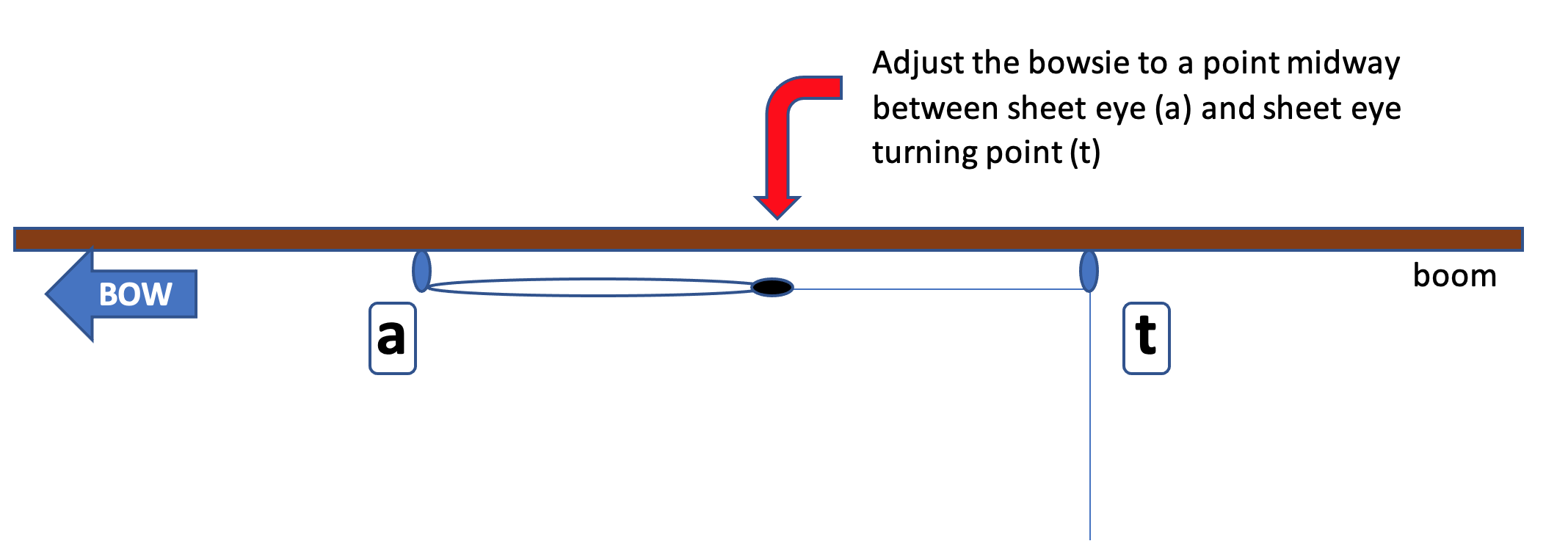
- Holding the boom in the close-hauled position, estimate halfway between the boom and the fairlead where the sheet exits the boat (see Illustration 3). At this distance from the fairlead tie an O ring to each sheet with a half knot (see Fig. 1). You will complete the knots later.
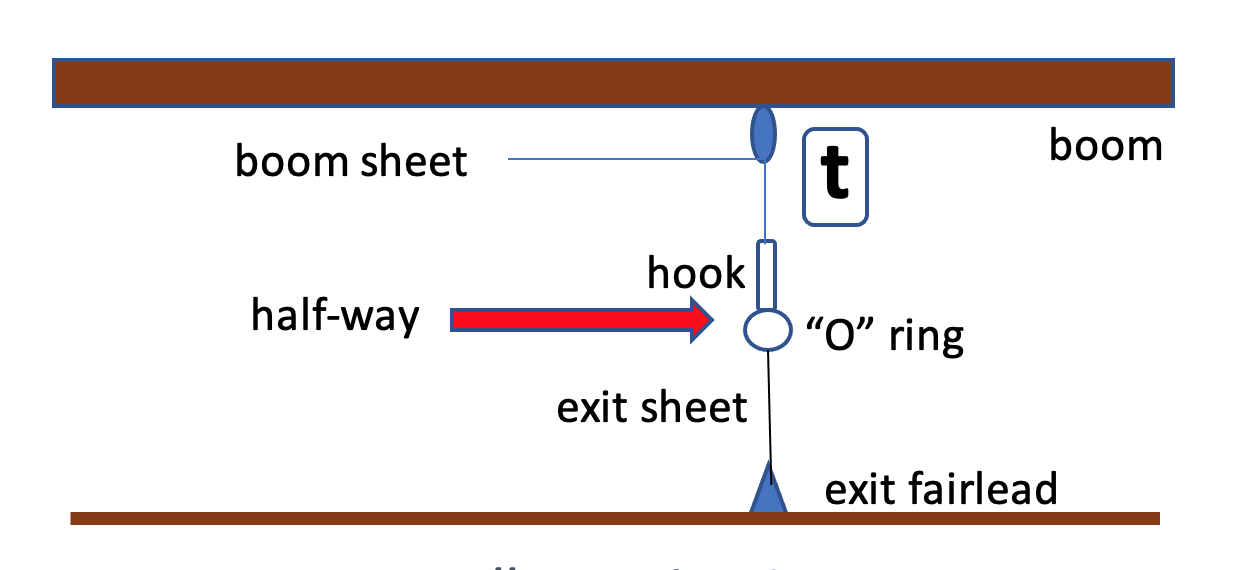
- Clip your sheet hook to each O ring. (see hooks in Figs 2 and 3).
- Pull (by hand) one boom at a time into the close-hauled position and pass the sheet line coming from the boom through the hook and tie it off with a half knot. It is important to make sure that the boom is in the close-hauled position. Do this with each boom.
- Check each boom’s position and adjust the hook and ring now if necessary.
- Using the transmitter, adjust the sails in and out. Pay particular attention to the running position of sails when fully out.
- At this point you may have to adjust the end point at the farthest travel (running) position when the sheets are out. The booms should be set between 85° and 90° (jib) and 80° (main) from the centerline of the boat. Make sure that the mainsail is not deformed too much by the shroud when the sails are out.
- You can adjust these angles by using the travel adjustment function in the radio and bowsie on each boom. Note: The lower most shroud should always be set up as the rear shroud on the shroud rack. This will minimize the impact that the shrouds have in deforming the mainsail. If the upper shroud is in the rear position, it will have significantly more impact on the shape of the mainsail when running.
- When you are satisfied with the travel of the booms, complete the knots on the O rings and the hooks. CA the knots, cut each end of the line about ⅜ in long, and heat seal the ends with a grill lighter or CA them.

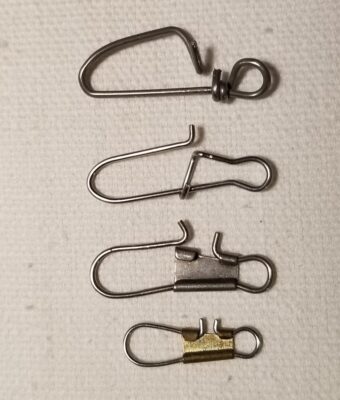
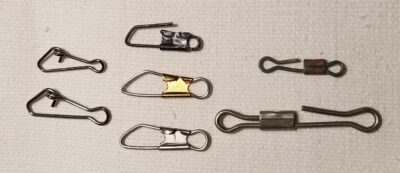
Make sure your sheet lines are of adequate strength and have Kevlar fibers in the weave. These take a lot of abuse. Now is the time to make your basic tuning adjustments for a medium air day: 5–7 knots. Set the sail camber. Tension the back stay. Check the twist in the sails. Actual sail adjustments will be made pondside based on wind conditions. Setting the boat up in neutral positions (for medium wind) is accepted practice.
All of the hooks and O rings are available on Amazon using the following descriptor in the search feature.
O Rings
- high strength solid ring for fishing
- teardrop fishing split ring
- stainless-steel fishing oval split rings
Hooks
- stainless fishing line snap connector
- stainless-steel snap swivel (remove the swivel for this application).

